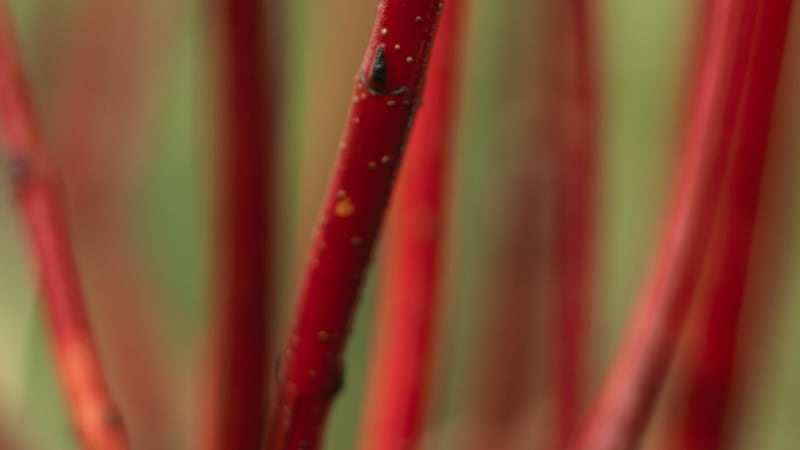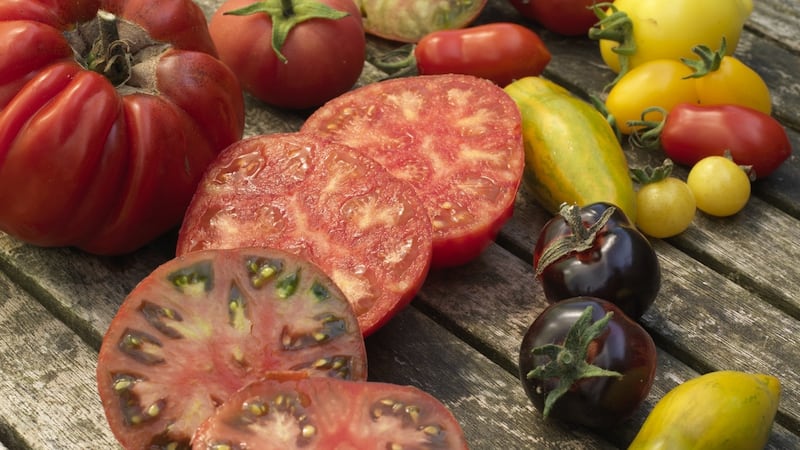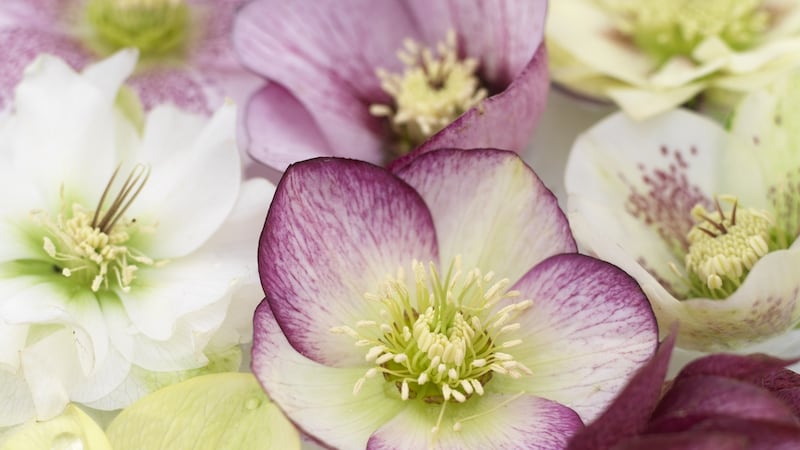Some people hate late February but not me.
It gives us hellebores with flowers the colour of ballet shoes, crushed strawberries, storm-clouds and cucumber margaritas. Morning birdsong. Plump packets of half-forgotten seed orders arriving in the post. More light. New life.
The annual miracle that is newly-hatched seedlings and the sweet, musty smell of seed potatoes gently chitting by a window . . . What’s not to love?
It’s also a time of new beginnings and fresh starts in the kitchen garden or allotment, for whatever preparatory work you put in over the coming weeks, you’ll reap its benefits tenfold in the months to come.
Outdoors, this is a great time to ‘turn’ the compost heap and to clear, hoe and rake vegetable beds before covering the bare soil in a protective mulch of well-rotted organic matter.
Ideally this means plentiful barrow-loads of manure or chocolate-coloured, humus-rich homemade compost, but if you can’t get your hands on these, then Gee-Up (geeup.ie ) or Envirogrind (envirogardenandhome.com) are both excellent, Irish-produced alternatives.
Another is to sow a fast-growing, cold-hardy green manure like phacelia. Not only will this help to suppress weed growth until you cut it back/dig it into the ground in late spring, but it will also help protect and insulate the soil, boost fertility and prevent precious plant nutrients from leaching.
Plus you can always leave a little patch to bloom (it has very pretty, scented, lavender-blue, bee-friendly flowers) as a way of attracting pollinating insects, as well as to use as a cut-flower.
Seed is available to buy from good Irish garden centres as well as from specialist online suppliers including Fruithill Farm who stock organic seed. (fruithillfarm.com). But make sure to pick a dry, mild day for this kind of outdoor work; not only does it make much less of a mess but it's also far kinder to the soil.
Speaking of which, if the soil in your kitchen garden or allotment tends to be cold, wet, sticky and heavy, then covering it with a cloche, cold frame or layer of strong polythene sheeting for even a few weeks at this time of year will help it to warm up and dry out before sowing/ planting.
When/if beds are badly overgrown or neglected, then the same sheet of polythene (spread taut, its edges buried into the ground) will also help to kill or weaken stubborn weeds if left in-situ for a couple of months, making it far easier to prep those same beds for sowing and planting come late spring.

Outdoors, late February is also a good time to direct-sow broad beans (suitable varieties for spring sowing include Witkeim Manita, available from Klaus Laitenberger's greenvegetableseeds.com) and plant garlic sets (suitable varieties include 'Cristo', available from mrmiddleton.com and 'Flavor', available from fruithillfarm.com) into weed-free, well-drained, well prepared beds in the garden or allotment.
But if you can give young seedlings a sunny windowsill indoors or a frost-free glasshouse/protected spot in a polytunnel, then the choice of what you can grow from seed at this time of year is far larger.
It includes heat-loving plants such as tomatoes, chillies, sweet peppers, melons, French beans, basil, aubergines and cucumbers as well as (for transplanting outdoors later in spring) leeks, celeriac, scallions, coriander, onions (as seed), oriental salads, lettuce and cabbage.

All should be sown into modules or pots, undercover and with bottom heat (an electric propagator or heated mat is perfect for this purpose), bearing in mind that the heat-loving kinds in particular need steady warmth and generous light levels in the weeks and months ahead if they are to grow into strong, healthy, properly-productive plants.
Tomato plants, for example, are unhappy in temperatures lower than 15C while insufficient bright daylight will also produce weak, leggy growth. Whichever varieties you choose to grow, sourcing top-quality seed is crucial. Recommended Irish suppliers include mrmiddleton.com, greenvegetableseeds.com, organically-certified brownenvelopeseeds.com and irishseedsavers.ie.

And if there’s any growing space in your polytunnel or glasshouse going a-begging?
Then you can use it to grow an extra-early crop of potatoes as well as early strawberries (just make sure to throw a protective layer of fleece over them on frosty nights).
Speaking of potatoes, now is the time to source seed of your very favourite varieties before stocks run low. Again, you’ll find them stocked in most good garden centres at this time of year, many of which also carry a selection of certified-organic seed. Some of my own favourite varieties include ‘Charlotte’, ‘Orla’ and ‘Pink Fir Apple’ while varieties with proven blight-resistance include the floury ‘Carolus’, waxy ‘Vitabella’ and ‘Bionica’ (fruithillfarm.com)
Seed-sowing aside, as long as the soil isn’t frozen or sodden, this is a good time to plant bare-root fruit trees, fruit-bushes and cane fruit before the bare-root season ends.
Recommended suppliers include all good Irish garden centres as well as specialist nurseries including Clare-based Irish SeedSavers (irishseedsavers.ie), Cork-based Future Forests (futureforests.ie) and Wexford-based English’s Fruit Nursery.
There’s also enough time (but hurry) to prune many kinds of fruit bushes, trees and cane fruit including redcurrants, whitecurrants, blackcurrants, gooseberries, apple, pear trees and autumn-fruiting raspberries.
But avoid pruning stone fruits (for example, plums, cherries, damsons, gages, peaches and nectarines) as this should only be done in summer to minimise the risk of what’s known as ‘silver leaf’, a potentially fatal disease of certain kinds of fruit trees.
After you’ve finished, make sure to remove the pruned material, then finish off by weeding and shallowly mulching around the base of the plant to help keep the soil weed-free as well as to nurture it, while making sure that the mulch doesn’t make direct contact with the plants. A little sprinkle of an organic slow-release pelleted fertilizer will also help to keep them in bonny good health, but isn’t essential.
This Week in the Garden
Few early spring-flowering plants can rival Lenten hellebores (Helleborus x hybridus) for their delicate beauty and rich variety of colours as well as their resilience to all that the Irish climate throws at them.
These hardy, long-flowering, long-lived perennials enjoy growing beneath the partial shade cast by deciduous trees and shrubs and need a damp but free-draining soil enriched with an annual autumn mulch of well-rotted manure or leaf mould.
Cutting away and binning their tatty old leaves in late autumn/winter helps to keep plants healthy and prevent the spread of overwintering pests and diseases. This is an excellent time of the year to buy hellebores in garden centres or specialist nurseries such as Mount Venus (see Dates for Your Diary below for details of their annual Hellebore Days) while you can see them in bloom.

Once they've finished flowering, this is a good time of year to cut back many different kinds of winter-flowering shrubs including winter honeysuckle (Lonicera sp), Viburnum x bodnantense and V. farreri and winter jasmine, as well as the winter dogwoods (cornus) grown for their vibrantly colourful stems.
Many late summer-flowering shrubs can also be pruned this month, including the butterfly bush Buddleja davidii, perovskia, romneya, potentilla, fuchsia and caryopteris, all of which flower on new growth.
This is also a good time of year to cut back ornamental grasses such as miscanthus, calamagrostis and Stipa gigantea. Always wear gardening gloves to protect your hands when pruning and use a sharp clean secateurs or loppers before finishing off with a mulch of well-rotted organic mulch around the base of the plant.
This year’s unusually mild spring means that the bare-root season will be drawing to a close earlier than usual, so make haste if you plan on purchasing and planting them this month.
With newly purchased bare-root plants, always protect the vulnerable root systems from frost/ drying out until you get a chance to get them in the ground , which ideally should be as soon as possible after purchase.
Dates For Your Diary:
Today (Saturday 23rd February,12pm), The Royal Irish Yacht Club, Dun Laoghaire, County Dublin, 'The Education of a Gardener', an illustrated lecture by Fionnuala Fallon on behalf of the Alpine Garden Society, tickets €29 includes lunch, call Barbara O'Callaghan at 086 3785242 for details.
Tuesday 26th February (8pm), Foxrock Parish Pastoral Centre, Kill Lane, Dublin 18, 'Plant Combinations', a talk by Joseph Atkin, head gardener of Aberglasney Gardens in the UK on behalf of Foxrock & District Garden Club, see foxrockgardenclub.com.
Thursday 28th February (8pm), The Artane Beaumont Family Recreation Centre, Kilmore Road, Artane, D.5, 'Members' Gardens', an illustrated talk by Christine O' Flynn on behalf of Dublin Five Horticultural Society, admission €5, call 0872423020 for details.
Saturday 2nd and Sunday 3rd March (10am-6pm), Mount Venus Nursery, The Walled garden, Tibradden, Mutton Lane, Dublin 16, Helleborus Days at Mount Venus', a celebration of this wonderful genus of spring-flowering perennials with many choice varieties for sale in a vast array of flower forms and colours including singles, doubles, anemone forms; green, white, yellow, purple and black, see mountvenusnursery.com for details.
March 2nd–Match 22nd (Tuesday-Sunday, 11am-5pm), Bellefield House & Gardens, Shinrone, Birr, County Offaly, a celebration of daffodils (narcissus) including landscape architect and garden owner Angela Jupe's large collection of rare/ heritage varieties, see angelajupe.ie;




















